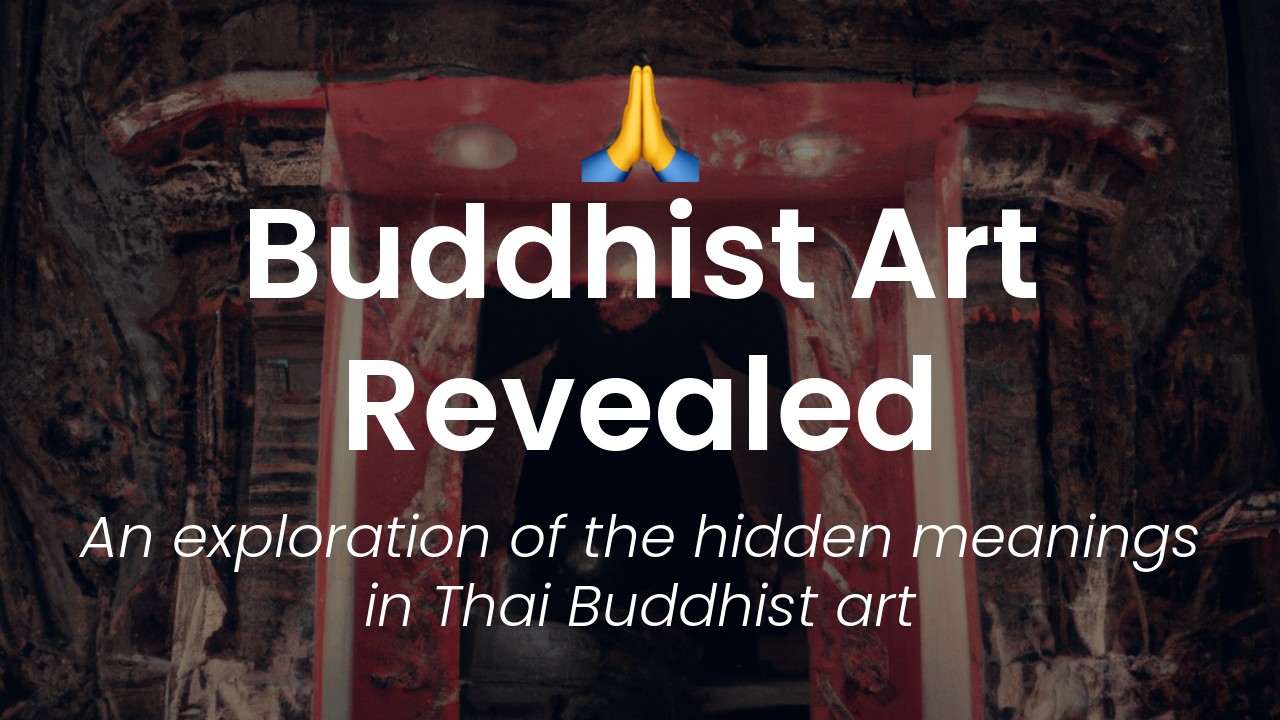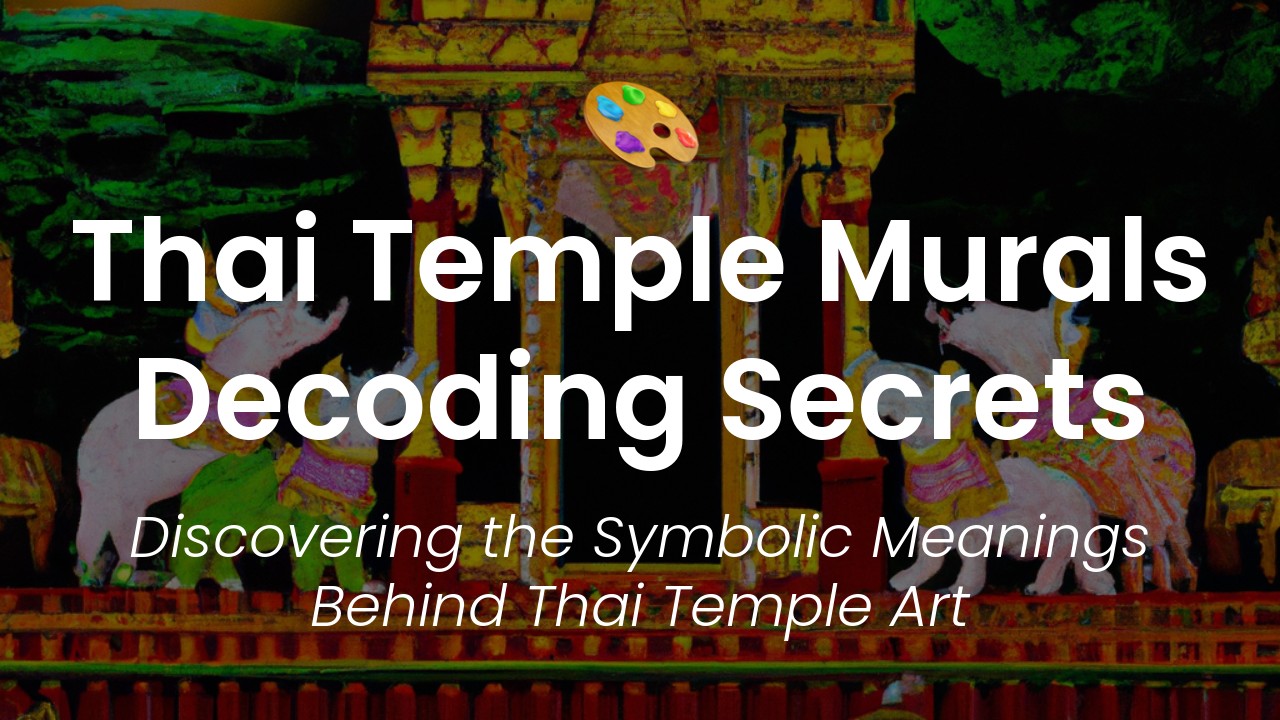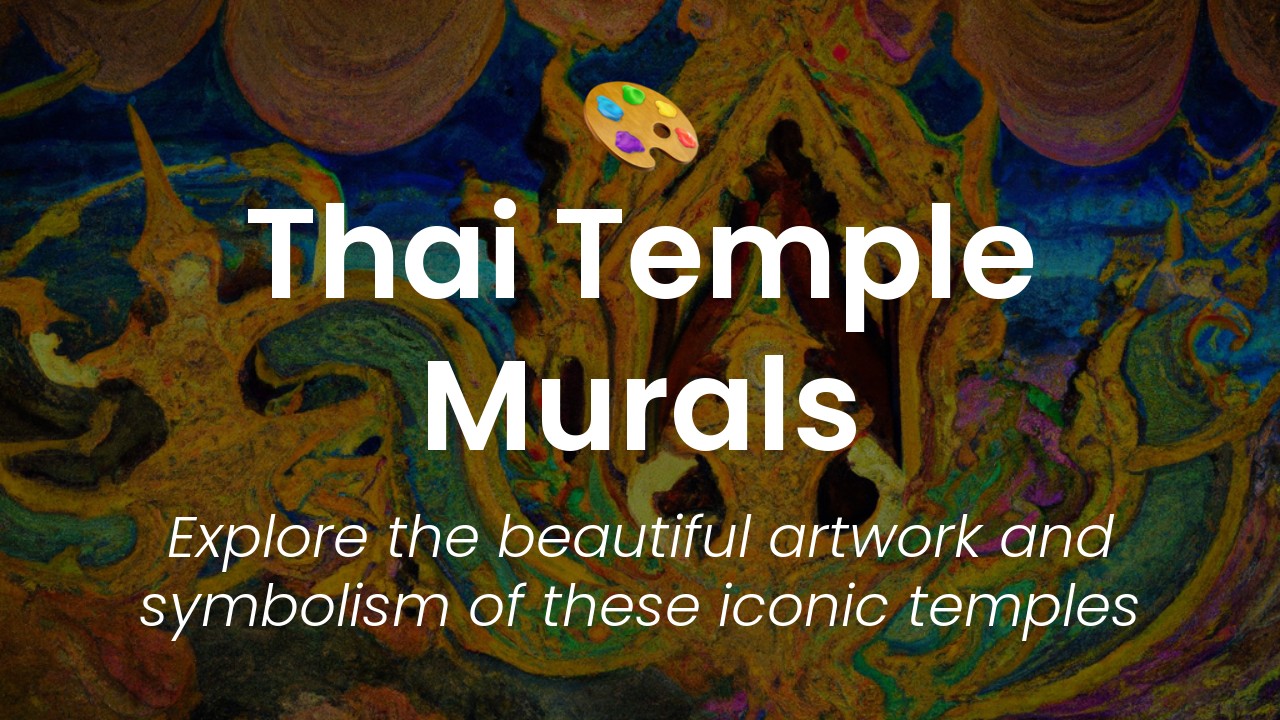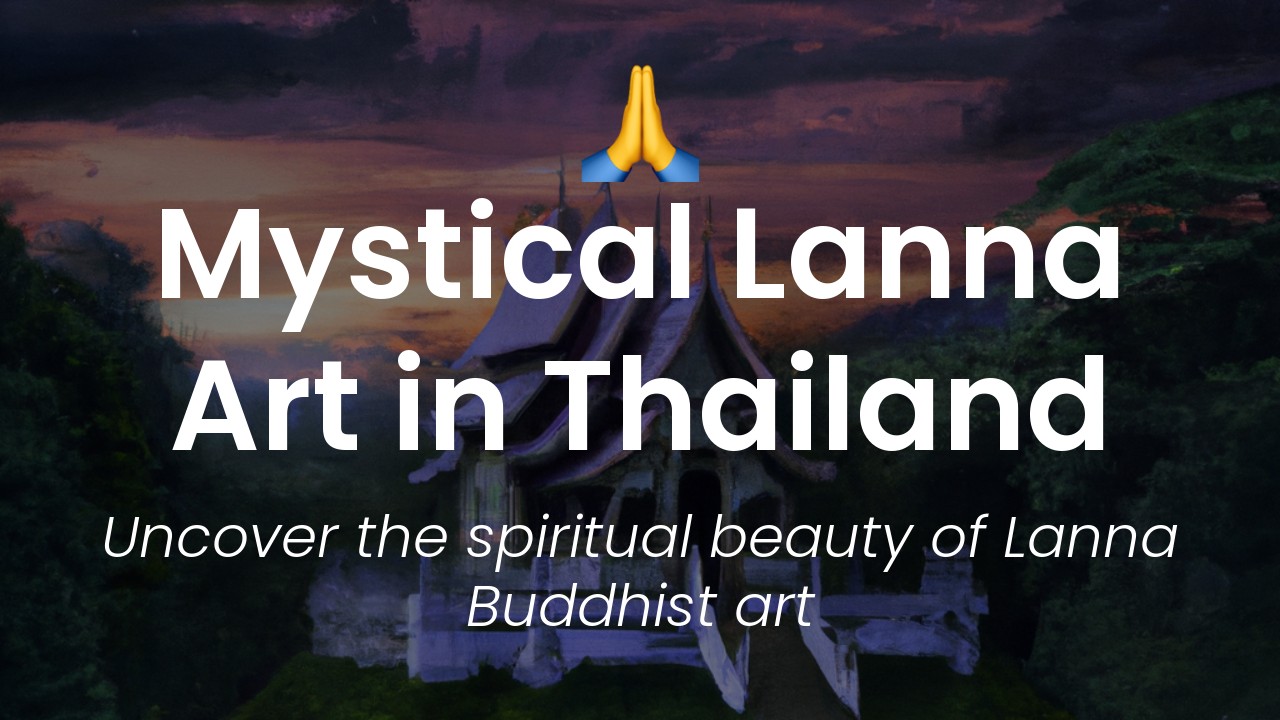As a Thai woman, I have always been fascinated by my country's rich artistic heritage. One of the things that make Thai art truly unique is its strong connection to Buddhist symbolism. In Thailand, Buddhism has been a crucial element of the country's culture for thousands of years, and its spiritual values continue to inspire artists to this day.
For Thais, art is not just something beautiful to look at – it is a powerful means of conveying important concepts and beliefs. From sculptures and paintings to textiles and architecture, Buddhist symbolism can be found everywhere in traditional Thai art. However, understanding the meaning behind these symbols requires some knowledge of Buddhist philosophy – something that many visitors to Thailand may not possess.
In this article, I would like to unveil some of the secrets of Thai art and explain the Buddhist symbolism behind some of the most iconic pieces. If you're planning a trip to Thailand, I strongly recommend taking the time to explore the country's art scene and learning about the deeper meaning behind the stunning visuals you'll encounter. Whether you're an art enthusiast or simply interested in Thai culture, this article will give you a fascinating insight into the connection between art and spirituality in Thailand.
Lotus Flower: Purity and Enlightenment
One of the most prominent symbols in Thai art and culture is the lotus flower. You will find it everywhere, from temple murals to traditional Thai dance performances. The lotus is considered an important Buddhist symbol because it represents purity and enlightenment.
In Buddhism, the lotus flower is compared to the journey of human life from the darkness of ignorance to the light of enlightenment. The lotus plant grows in shallow, muddy water, and yet its blossoms are pristine. This symbolizes the idea that no matter how chaotic and impure the world is, individuals can rise above it and reach a state of pure consciousness.
When studying Thai art, you may notice that the lotus is often depicted in different stages of blooming. This represents the different stages of enlightenment that a person can achieve throughout their spiritual journey. From a tightly closed bud to a fully opened blossom, the lotus shows the gradual progress of one's mind towards enlightenment.
Naga: Protection and Power
The naga is a mythical creature that is deeply rooted in Thai art and folklore. It is a serpent-like creature with dragon-like features, such as sharp scales and a powerful presence. The naga is believed to have protective powers and is often present in Thai temples, where it is depicted as a guardian that is capable of warding off evil spirits.
In Thai art, the naga is often depicted in a coiled position, as if it were guarding something precious. This symbolizes the naga's ability to provide a sense of security and safety. Additionally, the naga is seen as a symbol of power and majesty. Its serpent-like body represents fluidity and flexibility, as well as the ability to adapt and overcome.
Wheel of Dharma: Teachings of Buddha
The Wheel of Dharma is another important Buddhist symbol that is featured prominently in Thai art and culture. The wheel represents the teachings of Buddha and is often used as a visual aid in Buddhist meditation practices.
In Thai art, the Wheel of Dharma is often depicted as a wheel with eight spokes, each of which represents one of the eightfold path teachings of Buddha. The wheel also has a rim, which represents mindfulness, and a hub, which represents concentration. Together, the spokes, rim, and hub create a symbol of balance and harmony.
Elephant: Strength, Wisdom, and Determination
The elephant is a beloved symbol in Thai culture, where it is revered for its strength, wisdom, and determination. In Buddhism, the elephant is also seen as a symbol of compassion.
In Thai art, you will find the elephant depicted in various forms, from realistic paintings to intricate sculptures. One of the most common depictions of the elephant in Thai art is as an offering to the Buddha. This represents the act of giving as a means of attaining merit.
Bodhi Tree: Where Buddha Reached Enlightenment
The Bodhi tree is the tree under which Buddha is said to have achieved enlightenment. It is considered a sacred symbol in Thai culture and is often present in Thai art, particularly in temples and other spiritual places.
In Thai art, the Bodhi tree is often depicted with a circular or triangular canopy, which represents the crown chakra and spiritual enlightenment. The tree's roots, on the other hand, represent grounding and the stability of the physical world.
Phra Phrom: Four-Faced Buddha and the Four Elements
Phra Phrom, or the Four-Faced Buddha, is a popular figure in Thai art and culture. The Four-Faced Buddha is believed to grant blessings of good fortune and success, and his four faces represent the four elements – earth, air, fire, and water.
In Thai art, Phra Phrom is often depicted with four faces looking in different directions, symbolizing his ability to see and watch over all aspects of life. He is also often depicted wearing a red robe, which symbolizes his passion and compassion for all living beings.
In conclusion, the various symbols in Thai art contain deep meaning and significance. From the lotus flower to the Four-Faced Buddha, each symbol represents a different aspect of Buddhism and Thai culture. By understanding these symbols and their meanings, we can gain a deeper appreciation for the rich artistic and cultural heritage of Thailand.





